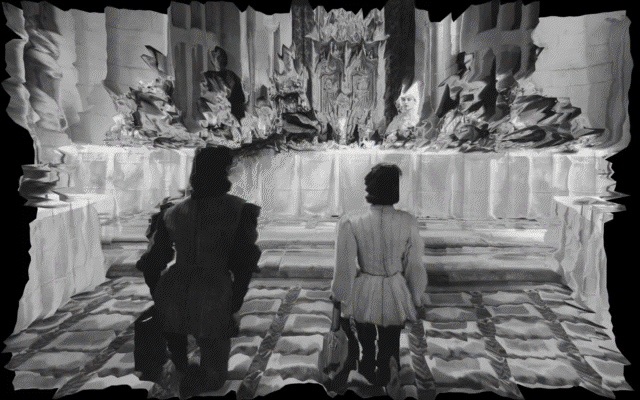Project: A Brief History of Absence
Фильмы без героя, без зрителя, без автора и даже без камеры — в новой кинопрограмме “
Seventy years ago, the great cinema critic and theorist André Bazin proclaimed the “Myth of Total Cinema.” He saw the history of cinema as a movement towards “the reconstruction of a perfect illusion of the outside world in sound, color, and relief […], a recreation of the world in its own image, an image unburdened by the freedom of interpretation of the artist or the irreversibility of time.” Of course, Bazin did not mean to imply that his idea would ever be realized: a myth remains a myth.

Seventy years ago, the great cinema critic and theorist André Bazin proclaimed the “Myth of Total Cinema.” He saw the history of cinema as a movement towards “the reconstruction of a perfect illusion of the outside world in sound, color, and relief […], a recreation of the world in its own image, an image unburdened by the freedom of interpretation of the artist or the irreversibility of time.” Of course, Bazin did not mean to imply that his idea would ever be realized: a myth remains a myth.
And yet the dream of total cinema has come true, though not as the theorist understood it. Instead of films that are indistinguishable from reality, reality itself now imitates the action of the film-maker by generating an endless and boundless stream of moving audio-visual images, which alter the reality that produced them rather like a self-fulfilling prophecy.
How can cinema—especially auteur cinema, which by definition is in dialogue with reality—respond to this overproduction of images? One effective strategy is to exploit a property of cinema that slips through the net of Bazin’s theory. By the use of allusions and distractions, subtext and context, cinema not only conveys objective reality, but also transmits substances that are by definition invisible and inaudible, since they are located in the psychological or spiritual realm.
Cinema can also liberate us from oversaturation with audio-visual material by bringing the viewer to a point of purification through emptiness. When a film works skilfully with the category of absence, our sight and hearing cease to function in their usual mode; we begin to see and notice what is not there on the screen. This effect is often achieved by literally removing and discarding what have been taken to be fundamental elements of cinema, calling into question the very canons of cinematic language.
Absence as a formal technique can assume radical, even extreme shapes. Take, for example, A.K.A. Serial Killer, the outstanding work by Japanese documentary filmmaker and revolutionary Masao Adachi. Adachi uncompromisingly applies the Marxist theory of landscape, putting his main protagonist outside the film. We see only the landscapes where he has existed, his class status and the deplorable state of the entire country.
Adachi would later go even further and put himself outside the bounds of cinema when he quit directing and devoted himself for twenty-seven years to revolutionary activism in the Middle East. Adachi’s legendary contemporary Jean-Luc Godard stopped short of abandoning cinema but, at the height of his radicalisation, he rejected his own authorship and attempted to transform not only the language of film but also the cinematic process through the collectivity of the Dziga Vertov group.
Absence in cinema can also be a way of achieving a selfhood that is almost intimate in its soulful exposure. In Just Don’t Think I’ll Scream, French director Frank Beauvais dispenses entirely with the camera. He assembles a deeply personal diary of the breakup with a lover using only frames from other people’s films. The mirroring effect works as well or better than if he had shot hundreds of hours of his own material.
Finally, it can happen that an absence, which is important for the film, is created solely by external circumstances. Marcel Carné’s The Devil’s Envoys, made in France under the German occupation, is by definition deprived of the possibility of direct expression, and this mute subtext saturates the fairy-tale, fantasy story on a symbolic level, making a poignant statement about a harrowing time.
A time when films are deprived of an audience by the will of government surely also deserves to be called “harrowing.” Such was the fate of The Beginning of an Unknown Era by directors Andrey Smirnov and Larisa Shepitko, which was left on the shelf for twenty years. The long concealment of this beautiful and daring picture from the public gaze becomes part of its story: the film is saturated with an extra context that enriches what happens on the screen.
According to Justin Remes, who has delved deep into the question of absence in contemporary film, “Absence never exists in isolation. An erasure can be understood only in relation to what has been erased.” By this logic, we will never be able to fully realize our own presence—in cinema, in society, in the epoch which it is our lot to exist in—unless we try to comprehend the phenomenon of absence, disappearance or silencing of important elements and figures, at least on the screen. In the latest curatorial film programme at
Viewers are invited to join a mediation tour (in Russian), which aids understanding of the
The film screenings and tour are free of charge with advance registration.